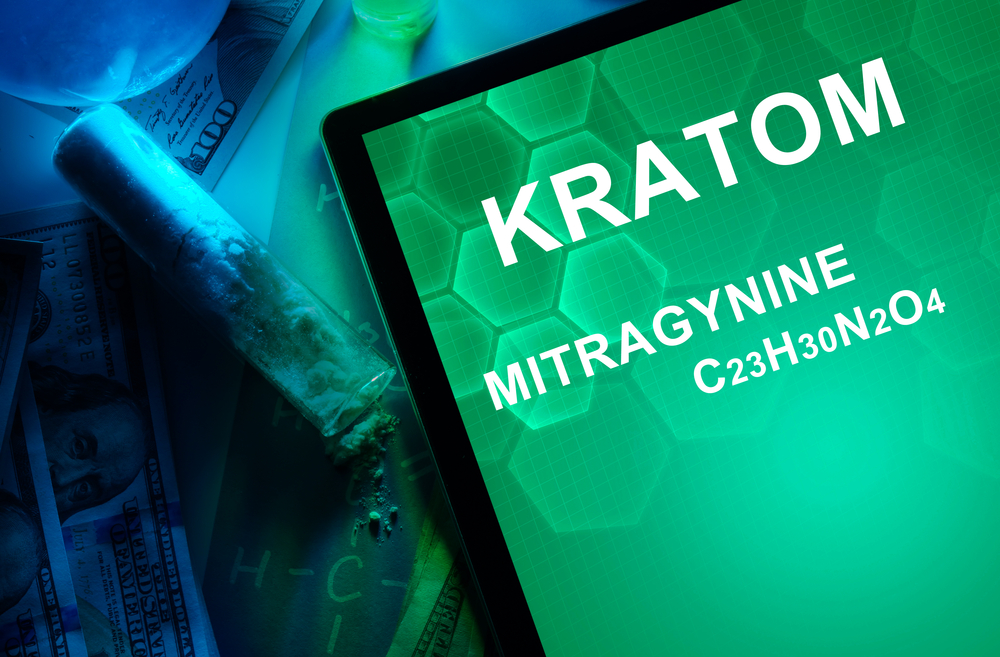As the United States grapples with an ongoing opioid crisis, an obscure green powder found at your local gas station, derived from a Southeast Asian plant known as kratom, is gaining attention. Its effects, ranging from stimulant-like to opioid-like depending on the dosage, have propelled kratom into the heart of a complex debate on drug regulation, addiction treatment, and public health.
Yet, its lack of regulation and growing evidence of addictive properties have raised alarm bells, prompting researchers like Professor Kirsten Smith of Johns Hopkins University to dig deeper into kratom use and addiction.
“Because empirical human research on kratom use and cessation is in its early stages, most of the relevant knowledge is from surveys and case reports. Many of those reports describe symptoms presented as kratom “misuse,” physical dependence, or addiction. For any new phenomenon with effects on health (kratom use in the US is one example), case reports provide crucial information. They may help validate or contextualize data from other sources.”
As the debate around kratom regulation intensifies, it becomes clear: more data is urgently needed to inform our understanding of this complex and widely misunderstood plant.
 If you have recently traveled to Ohio and had to stop at a gas station, you may have seen bags and capsules of green powder. It might have had names like “Red Vein Bali.” “Green Borneo” or “White Malay.” These names refer to the different strains of a plant called Mitragyna speciosa or kratom.
If you have recently traveled to Ohio and had to stop at a gas station, you may have seen bags and capsules of green powder. It might have had names like “Red Vein Bali.” “Green Borneo” or “White Malay.” These names refer to the different strains of a plant called Mitragyna speciosa or kratom.
The plant leaves are harvested, dried, and crushed into powder form. The names red, green, and white refer to the veins of the leaves of the different kratom strains. This powder can be used in tea, directly ingested, or turned into tinctures. The drug’s effects are similar to psychostimulants, like coffee, and opioids, such as morphine or opium.
Interestingly, the drug has a dose-dependent effect. Low levels of kratom are associated mainly with stimulant effects, while higher doses are associated with opioid-like effects (analgesia, euphoria, sleepiness). The different strains are also believed to differ in effects, with red veins being more analgesic and anxiolytic (anxiety-reducing), white veins being more akin to coffee and stimulants, and green veins balancing the two.
The drug is currently unregulated and considered a “supplement” at the federal level, and regulated for safety, but not classified on the Controlled Substance Schedules. At one time, early last decade, many in the drug treatment field were looking to kratom to assist in the ongoing overdose epidemic, as it has a history of being used to manage opioid withdrawal. More recently, the safety and efficacy of the drug, as well as its own addictive properties and physical dependency syndrome, have come under scrutiny.
As a result, there is a growing need for empirical research into the effects of kratom, the experience of addiction to kratom, and reviews of possible treatments for kratom use disorder (KUD).
Due to the lack of evidence-based, or at least empirically reviewed, assessment and treatment options for kratom, the research team’s goal was to gather case studies and check for consistency in the experience of the kratom user and the treatments used by clinical practitioners. “This systematic review examines case reports of kratom physical dependence or addiction, focusing on assessment, diagnosis, and treatment methods and the completeness of the clinical data presented.”
Without specialized tools, these case studies are entirely grounded in self-reported patient data. The overarching objective was to investigate various key facets. These include the nature of clinically relevant information that clinicians document in case reports about kratom use, the assessment methods clinicians employ for patients who report using kratom, the approach clinicians use to diagnose health conditions associated with kratom use, and the way clinicians evaluate physical dependence on and addiction to kratom. Furthermore, they wanted to know what treatment options clinicians offer these patients and whether there are observable differences in reports from Southeast Asia, where kratom products differ from the fresh plant material typically used, versus those from the US and Europe.
Smith’s research team leveraged the PRISM (Preferred Reporting Items for Systematic Reviews and Meta-Analyses) approach to pinpoint relevant case reports. They searched six databases: PubMed/MEDLINE, Embase, CINAHL, Web of Science, Scopus, and Google Scholar. Their search timeline stretched from 1957, which marks the publication year of the first case report on kratom use, through to July 2022, when their analysis commenced. This offered them an extensive data range of 65 years to delve into.
Including a case report in their study was governed by five criteria. Firstly, the report needed to be written in English. Secondly, it had to be an original, peer-reviewed case report or case series. Thirdly, it needed to state explicitly that the patient used kratom. Fourthly, the patient was required to be alive at the time of the report, and no kratom-related fatalities were reported as primary case data. They reviewed such reports in a different project. Lastly, the report needed to show that the patient experienced at least one clinically significant positive or negative effect that could be attributed to kratom use or cessation.
Conference posters, abstracts, cases with insufficient information, and duplicate case reports were all disqualified from the study. Following this rigorous screening process, the researchers were left with a total of 40 cases to scrutinize.
As the drug is new to the United States and other Western nations, only four reports were published before 2010, with most (55%) published between 2015 and 2022. The mean age was 36.4 years old, primarily male (63.4%). Race and ethnicity were usually not reported (67.3% of the time), but 20% were noted as “white/European/Euro-American,” 7.3% were Malaysian (the country where most of the root plant is found), and 1.8% were Indian.
Due to its similarities to opioids, 41% of users used it for pain management. It is also widely used to either work through opioid withdrawal (34% of users) or reduction of opioid use (14%). While it is similar to opioids, at lower doses, it also has caffeine-like effects, and 39% of users were using the drug for sociality, energy, or socialization. Some users were also using it for insomnia, alcohol withdrawal, or to assist in controlling anxiety. 66% of the users in the case report were believed to have symptoms associated with withdrawal, similar to opioid withdrawal, with 22% having physical dependency issues (sneezing, aches, flu-like symptoms, etc.).
The authors found that underlying absences within the data were holding back practitioners from being able to assess kratom use, addiction, and dependency thoroughly.
“One of our central aims was to determine what clinically relevant information is being documented by healthcare providers when they decide to publish cases involving kratom use.” For example, most reports did not identify the specific form of kratom (red/green/white vein) or the route of administration (tea/powder/tincture), and many did not have biospecimens to ensure that it was kratom being used, and not other similar substances that can be passed off as kratom, as kratom is currently extremely unregulated.”
Regarding the clinical assessment of kratom withdrawal syndrome, users are often being assessed with tools designed for drugs other than kratom. For example, the “Clinical Opioid Withdrawal Scale,” or COWS, is often used. Since kratom has similar effects to stimulants, some of the effects may not be measured using a tool designed specifically for opioid agonists:
“The variability of kratom products and preparations, and the complex pharmacology of kratom and each of its bioactive alkaloids, suggest that we might expect a wide range of clinical presentations among users who encounter kratom-related problems. That was generally not the case for kratom withdrawal, as described in the reviewed reports,” the authors explain.
“However, that might be attributable in part to the fact that many clinicians in our sample did not assess withdrawal in a standardized manner and/or relied exclusively on assessments intended to detect opioid withdrawal. This suggests providers may have erroneously regarded kratom as conferring solely opioid-agonist-like effects rather than conferring multifarious effects consistent with its complex pharmacological profile and the subjective self-report of effects from regular users. Because of this narrow focus, too little is known about the full scope of withdrawal from kratom; the withdrawal syndrome should be studied in a context that includes symptoms of withdrawal from psychostimulants and perhaps serotonin/norepinephrine reuptake inhibitors, in addition to opioids.”
Most interventions for kratom addiction and dependency (often two separate things) are also based on opioid use disorder (OUD).
“While it is clinically appropriate to pharmacologically treat patients experiencing drug withdrawal, it is unclear that long-term MOUD [Medications for Opioid Use Disorder] is clinically appropriate as a first-line treatment for kratom withdrawal, which does partly resemble withdrawal from opioids, but appears to be typically brief and not severe.”
The most common treatment was buprenorphine-naloxone (suboxone) which 47% of the cases received. 8% of the cases received methadone, one was prescribed morphine, and another was given an unidentified medication, though clonidine has also been used in some cases.
While there are limitations to this study, including the exclusion of case reviews that were not printed in English, the study hopes to drive clinicians and researchers to continue documenting and analyzing these cases to help expand the breadth of knowledge around kratom.
While there are discussions regarding drug regulations, there are voices pushing against outright criminalization of the drug. The possible use as an alternative to opioids at a time when “street opioids” are increasingly dangerous, especially under criminalization, or as an at-home alternative to MOUD, remain in the discussions of possible uses and benefits of the drug.
Regardless, more data must be collected on the specific experience of kratom use and addiction instead of relying solely on opioid use disorder tools and treatments. Creating, publishing, and analyzing case reports will be an invaluable tool.
****
Smith, K. E., Feldman, J. D., Schriefer, D., Weiss, S. T., Grundmann, O., Dunn, K. E., … & Epstein, D. H. (2023). Diagnostic ambiguities and underuse of clinical assessment tools: A systematic review of case reports on kratom addiction and physical dependence. Current Addiction Reports, 10(2), 282-292. (Link)















I think the increasing popularity of kratom is another sign of how the health care system has utterly failed millions of people. Psychiatric survivors are not safe going to the doctor, complaining of pain or fatigue. People who became addicted to opiates after a Dr prescribed oxycodone or the like are largely on their own (unless they’re covered by insurance that will pay for detox/rehab).
The FDA has been pounding its fist about the dangers of kratom for decades. Unfortunately, most people lost faith in the FDA long ago, and for good reason. Is it really a “conspiracy theory” to suspect that the FDA’s constant efforts to demonize kratom and schedule it in the same category as heroin is another sign of the FDA doing the bidding of big pharma?
When you fail people this badly, don’t be surprised when they circumvent you entirely and find their own solutions.
Report comment
We need to get rid of medicine for profit … Rockefeller medicine. And we need the medical anthropologists to help the mainstream doctors wean off their reliance on the “BS” of big Pharma’s lies, as systemically told in the mainstream medical journals.
Report comment
Unfortunate Kratom being mangled by clinical rhetoric–propaganda right out of the gate: “Gas Station Drug Raising Addiction Concern.” “Gas Station Drug?” As opposed to “pharmacy drug?” Anything that offers humanity reprieve, becomes suspect, especially being offered in gas station! That’s the opening gambit! Idiocy is off the chart. Everything must be forced through the sieve of “Data” “Collecting Data” “Clinical Presentation” “opioid use disorder!” Blah Blah Blah. It’s always: “Addiction, Addiction” “[M]ore data must be collected on the specific experience of Kratom use and addiction instead of relying solely on opioid use disorder tools and treatment.” Oh okay, whatever you say! Yea, right, let’s had over jurisdiction to the “Clinicians!” or better yet, the “FDA!” High Priests of knowledge production within the most anti-human of methods of distortion!” Let’s regulate it–let’s keep it from certain people who have certain “experiences” we don’t like.
Report comment
I had the same thought about the title. “Gas station drugs”? Your lack of objectivity (and snobbery) are showing!
Report comment
Who’s behind this latest blitz anyway? All the sudden the New York Times and CBS also have stories on the “dangers of kratom, the gas station drug”?
What You Should Know About the Potential Risks of Kratom https://www.nytimes.com/2023/07/26/well/mind/kratom-health-risks.html?smid=nytcore-android-share
More than a little suspicious if you ask me.
It’s the height of cluelessness, arrogance, callousness and downright murderousness that after the psychiatric (“health care” lol) system destroys a person so thoroughly that they have no options, then to take away the one thing that helps them get out of bed long enough to shower and dress.
Look at the numbers: how many hurt by kratom vs how many hurt/killed by everything the FDA said was “safe and effective”.
Report comment
Somebody decided to go after Kratom and started making it into a “story.” That’s how a lot of news happens, someone with a lot of money and/or power decides to make it a “story” and then tells the papers what to write!
Report comment
Hmm. I’m going to guess that that someone has ties to big pharma — either a lobbyist or one of those people who works at the FDA then for big pharma, or a friend in the media, especially considering most mainstream news is sponsored by pharma.
If you look at the history, there’s something really strange about the FDA’s obsession with kratom and constant efforts to demonize it. Several years ago, the FDA attempted to circumvent normal processes and tried to get the DEA to schedule kratom on an “emergency basis”. They only backed down do to a public outcry.
The people running things are just an endless source of disappointment.
Report comment
* due to
Report comment
Isn’t that what they do with the FDA to get drugs approved?
Report comment
Thanks for sharing such a valuable post with us. I am gonna bookmark this site. I have also seen your older post it is always awesome!
Report comment
Nice information you have shared in this post. Keep sharing this type of post. Thank you!
Report comment
Thank you for sharing such valuable information about kratom. Keep sharing this type of post!
Report comment